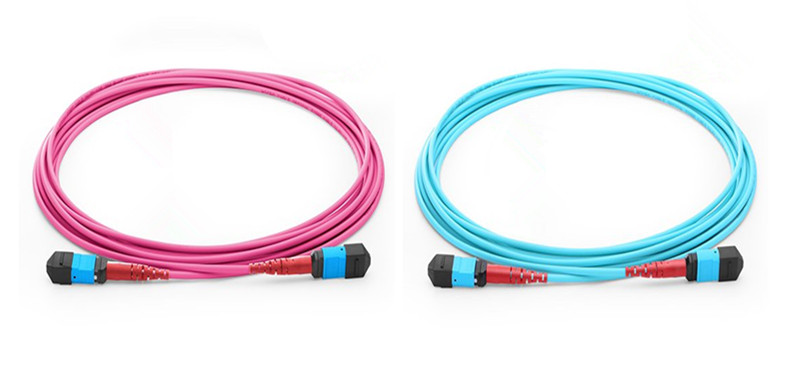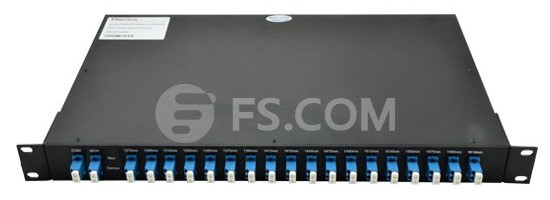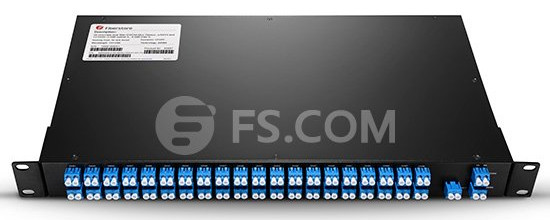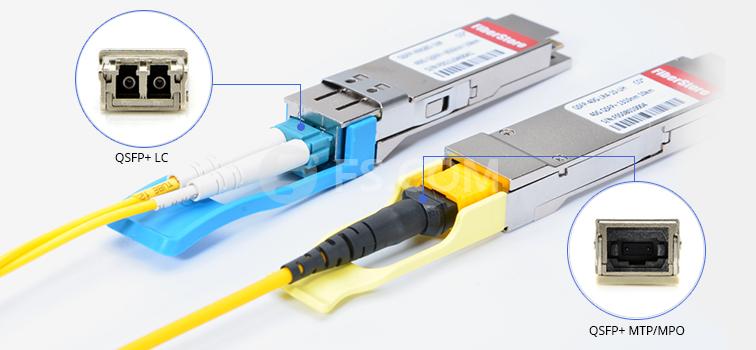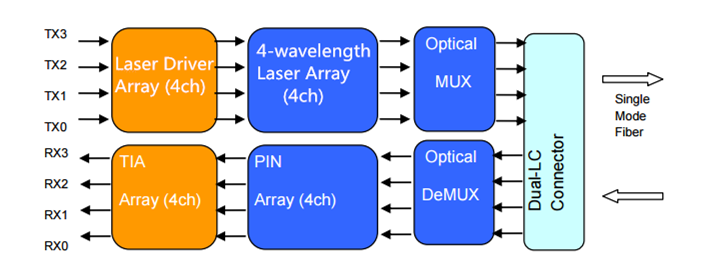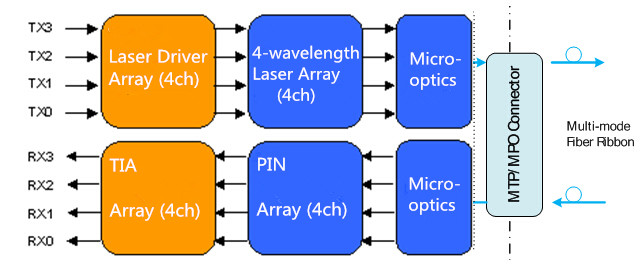In
the data centers, tremendous amount of business data needs to be
transmitted, processed and stored. Fiber optic links are vital for
providing the bandwidth and speed needed to transmit huge amounts of
data to and from a large number of sources. Transmission speeds at core
switches are increasing and backbone infrastructures are experiencing a
significant upsurge in the amount of fiber optic cabling. The 24-fiber trunking
and interconnect solution, allowing enterprise data center managers to
effectively migrate from 10G to 40/100G, offers the right 10-40-100G
migration path. Why say so? Keep reading and you will find the answer.
Standards of 40G and 100G
The
IEEE ratified the 802.3ae standard for 10G over fiber using
duplex-fiber links (one for transmitting and the other for receiving) in
2002. In 2010, the IEEE ratified the 802.3ba standard for 40G and 100G
by using parallel optics, or multiple lanes of fiber transmitting at the
same speed. Running 40G requires 8 fibers, with 4 fibers each
transmitting at 10G and 4 fibers each receiving at 10G, while running
100G requires a total of 20 fibers, with 10 transmitting at 10G and 10
receiving at 10G. Both scenarios call for high-density multi-fiber MPO
connectors.
MPO Connectors and Cables for 40G and 100G
For
40G, a 12-fiber MPO connector is used. Because only 8 optical fibers
are required, typical 40G applications use only the 4 left and 4 right
optical fibers of the 12-fiber MPO connector, while the inner 4 optical
fibers are left unused. To run 100G, a 24-fiber MPO connector is
recommended, with the 20 fibers in the middle of the connector
transmitting and receiving at 10G and the 2 top and bottom fibers on the
left and right unused.
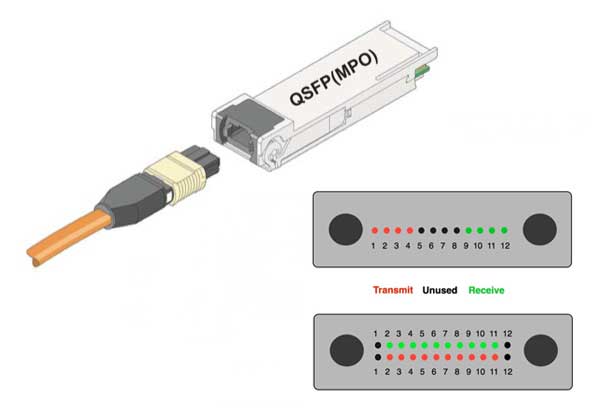
According to the IEEE 802.3ba standard, multimode optical fiber supports both 40G and 100G over link lengths up to 150 meters while using OM4 optical fiber and up to 100 meters when using OM3 optical fiber. It is important to note that single-mode fiber can also be used for running 40G and 100G to much greater distances using wavelength division multiplexing (WDM). While this is ideal for longer-reach applications, for most data center applications of less than 150 meters, single-mode fiber are not feasible due to expensive costs. Copper twinax cable is also capable of supporting 40G and 100G but only to distances of 7 meters.
Why Does 24-Fiber Trunk Cable Provide a Better Migration Path?
The
use of 24-fiber trunk cables can support 10G, 40G and 100G
applications. For 10G applications, each of the 24 fibers can be used to
transmit 10G, for a total of 12 links. For 40G applications, which
requires 8 fibers (4 transmitting and 4 receiving), a 24-fiber trunk
cable provides a total of three 40G links. For 100G, which requires 20
fibers (10 transmitting and 10 receiving), a 24-fiber trunk cable
provides a single 100G link. Some benefits of using 24-fiber trunk
cables are listed below.
- Maximum Fiber Use
As
mentioned previously, 40G uses 8 fibers of a 12-fiber MPO, leaving 4
fibers unused. When using a 12-fiber trunk cable, those same 4 fibers
are unused. For example, three 40G links using three separate 12-fiber
trunk cables would result in a total of 12 unused fibers, or 4 fibers
unused for each trunk. With the use of 24-fiber trunk cables, data
center managers actually get to use all the fiber and leverage their
complete investment. Running three, 40G links over a single 24-fiber
trunk cable uses all 24 fibers of the trunk cable. This recoups 33% of
the fibers that would be lost with 12-fiber trunk cables, providing a
much better return on investment.
- Reduced Cable Congestion
Less
cable congestion in already-crowded pathways is another benefit of
24-fiber trunk cable. Space is premium in the data center, and congested
cable pathways can make cable management more difficult and impede
proper airflow needed to maintain efficient cooling and subsequent
energy efficiency. The 24-fiber trunk cables are appreciably larger than
12-fiber trunk cables. For a 40G application, it takes three 12-fiber
trunk cables to provide the same number of links as a single 24-fiber
trunk cable, which may need 1.5 times more pathway space.
- Easier Migration Path
The
24-fiber data center fiber trunking and interconnect solution offers a
simple and cost-effective migration path from 10G to 40G and 100G. With
24-fiber trunk cables effectively supporting all three applications,
upgrading the cabling infrastructure is as simple as upgrading the hydra
cables or cassettes and patch cords to the equipment.
Conclusion
The
24-fiber data center trunking and interconnect solution helps data
center managers effectively and efficiently support today’s high-speed
requirements. With 24-fiber trunk cables that eliminate the need for
complete and complex reconfiguration all the way from the switch to the
equipment, it offers an easy, cost-effective method for upgrading from
10G, to 40G and 100G with the least capital and operating expense.
Originally published: www.fiberopticshare.com/24-fiber-trunk-cabling-better-solution-10-40-100g-migration.html
